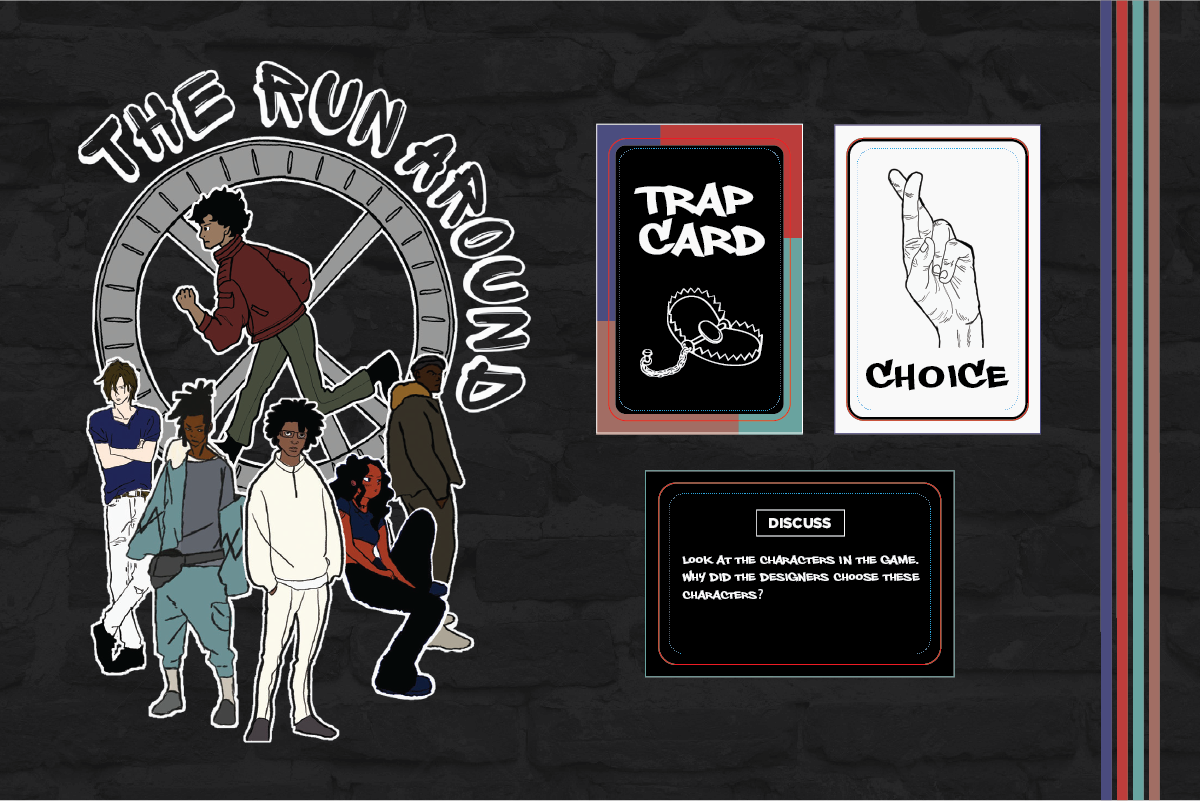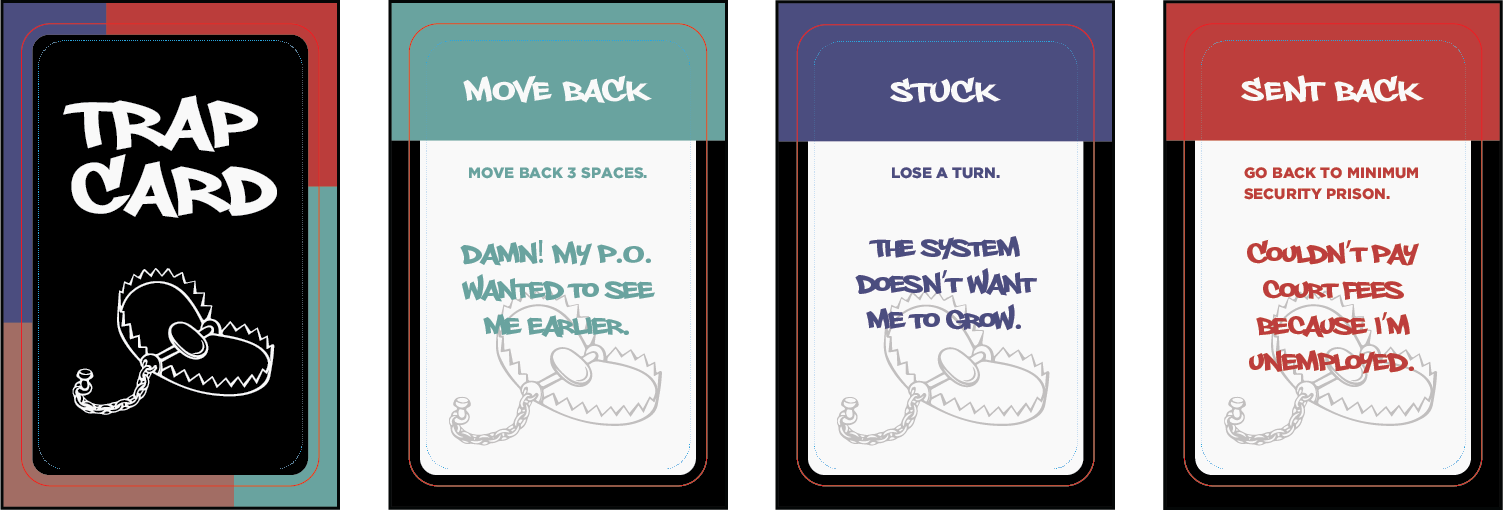
Exploring Juvenile Justice and Mental Health with Teen Game Designers (Part 2)
Here’s how the teens behind The Run Around are using the game to share their experiences navigating the juvenile justice system.
Part 1 of this series includes an overview of iThrive's Juvenile Justice System project and the framework for the Game Design Studio program. Click here to read Part 1.
It's called The Run Around. The goal of the board game is to be the first player to move all of your game pieces out of Maximum Security prison to Home. It's hard. It's frustrating. There are tons of setbacks. And it reflects the experiences of the youth designers who made it. The creative act, in the game design process, is part of how the designers cope with their experiences.
‟We tried to shape the game the way the justice system is," said K.C., one of the designers of The Run Around. ‟And we tried to base our directions and rules on what would happen in real life. One of them was like, when we are on parole or talk to our case worker, any little thing can get us put back into the predicament that we were in before. So we made the rules and regulations in the game to show that. It was to show how hard it is for you to get out."
While the subject matter was intense, K.C. found the design process enjoyable.
‟It was so fun," she said. ‟It was fun to see the finished product. It was fun making the rules and seeing other people get frustrated playing it [because our experience in the system is just as frustrating]. It was like when we were making the game, we were making it so people would get irritated because they wouldn't be able to win. And then seeing that they really did get mad. It was fun watching it become what it is now."
Another game designer was lit up by the aesthetic of the game.
‟I like the graphic designs of what we created," said R.D. "I like the clothes they have on. It looks very much like society right now."

K.C. agreed, saying, ‟They each have their own individuality."
Players advance their character through the game via the Choice cards. The Choice deck is stacked though. Only a few of the cards will actually allow you to leave prison. But watch out for traps! Landing on a Trap spot—and there are many—will cause you to move backward, lose a turn, or be sent back to prison.
R.D. sees the toughness of the game as a key design choice to add realism.
‟For guys who have been in jail, I feel like they can relate to it," he said. ‟A lot of stuff said in the scenarios in the game...it's realistic."

The game designers put a lot of intentionality into the design of the six characters, named Naomi, Marven, Jay, James, Ty, and Ace.
‟I created Marven," said M.A. "I relate a lot to Marven because my charge was similar. He gets caught up with friends and drugs and has to go to trial. People rat each other out."
For M.A, it wasn't just the circumstances that he channeled into the game. It was also the emotions.
‟The same thing with depression and anxiety happened to me while I was waiting for trial," he said.
And the final step of the game design process, which is to act, is set to happen over the next few months. The game designers will use The Run Around in workshops they are both designing and facilitating for stakeholders from the juvenile justice system in Boston beginning in May. They are also set to share their experiences at Games For Change this June. They are hoping that by sharing their experiences, decision makers can begin to create better support for youth who are system involved.

‟Anyone who goes through this has these feelings and the fact that it's a person of color doesn't make it any better," said M.A.


